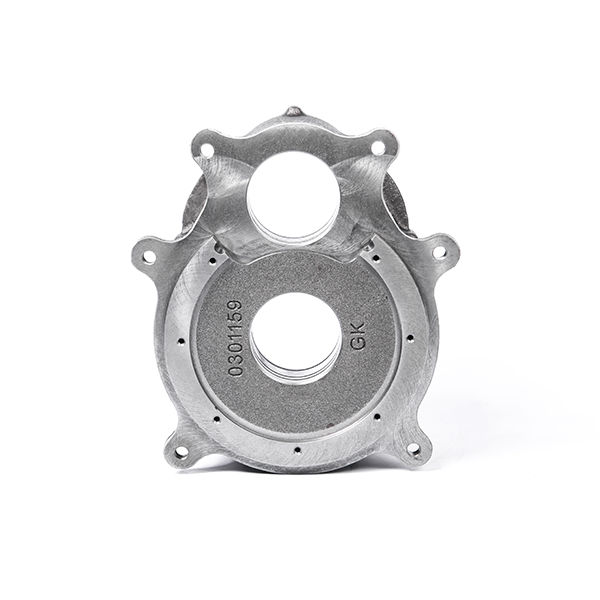Mobile:+86-311-808-126-83
Email:info@ydcastings.com
Exploring the Properties and Applications of A356 Aluminum Casting Alloys
Understanding A356 Aluminum Casting Properties and Applications
A356 aluminum casting is a commonly used alloy in the realm of manufacturing, particularly in industries that demand lightweight yet strong materials. This versatile aluminum alloy is primarily composed of silicon and magnesium, which bestow it with a unique set of properties that make it suitable for various applications. By exploring its characteristics, benefits, applications, and the casting process itself, we can gain a better understanding of why A356 is favored in the manufacturing sector.
Properties of A356 Aluminum Alloy
A356 aluminum is characterized by its excellent corrosion resistance, good weldability, and high strength-to-weight ratio. The chemical composition typically consists of about 7% silicon and 0.4% to 0.6% magnesium. This specific combination of elements helps achieve a fine-grained structure that enhances its mechanical properties.
One of the standout features of A356 is its ability to maintain strength even at elevated temperatures, making it ideal for applications in environments where heat resistance is paramount. In fact, A356 aluminum can withstand temperatures up to 300°F (approximately 150°C) without significant loss of performance, which is a crucial factor in sectors like automotive and aerospace where components face thermal stress.
Additionally, A356 exhibits excellent casting characteristics, allowing it to be poured into complex shapes with ease. Its low shrinkage upon solidification minimizes defects such as porosity and voids, which can compromise the integrity of the final product. This attribute not only enhances the mechanical properties of the casting but also reduces the need for extensive post-processing.
Benefits of Using A356 Aluminum
The benefits of using A356 aluminum casting are numerous. First and foremost, its lightweight nature contributes to improved fuel efficiency in automotive applications and reduced weight in aerospace components. The ability to produce complex geometries allows manufacturers to create intricate designs that would be challenging or impossible with other materials.
Moreover, A356 aluminum is recyclable, which aligns with modern sustainability goals. Reusing aluminum minimizes environmental impact and reduces material costs, making it an economically viable choice. The alloy also exhibits good resistance to wear and fatigue, prolonging the lifespan of components and reducing maintenance costs.
a356 casting

Applications of A356 Aluminum Casting
The versatility of A356 aluminum casting has led to its widespread use across various industries. In the automotive sector, it is frequently employed in the manufacturing of engine blocks, transmission housings, and structural components. Its lightweight yet robust nature contributes significantly to improving vehicle performance and efficiency.
In the aerospace industry, A356 is utilized for components like aircraft landing gear, brackets, and other structural parts that require a balance of strength and weight. The aerospace sector demands materials that can endure high-stress environments, and A356 aluminum meets these requirements effectively.
The marine industry also benefits from A356 aluminum casting, as components such as frames, housings, and other parts are exposed to harsh conditions, including saltwater, which can cause corrosion. A356’s excellent corrosion resistance ensures longevity and reliability in these applications.
Casting Process
The fabrication of A356 aluminum involves various casting techniques, including sand casting, die casting, and investment casting. Each method has its advantages and is selected based on the specific requirements of the project. For example, sand casting is ideal for producing large or complex components, while die casting provides high precision for smaller, intricate parts.
The casting process typically begins with melting the aluminum alloy and pouring it into molds. Once the metal has cooled and solidified, the molds are removed, revealing the cast part. Additional finishing processes, such as machining or surface treatment, may be employed to achieve the desired specifications.
Conclusion
A356 aluminum casting stands out in the manufacturing landscape due to its impressive combination of properties that cater to diverse applications. Its strength, lightness, and resistance to corrosion make it a preferred choice in industries like automotive, aerospace, and marine. As technology advances and the demand for efficient, sustainable materials increases, A356 aluminum is likely to maintain its relevance and importance in future manufacturing practices. By understanding its properties and applications, businesses can harness its full potential, driving innovation and enhancing performance across various sectors.
-
Why Should You Invest in Superior Pump Castings for Your Equipment?NewsJun.09,2025
-
Unlock Performance Potential with Stainless Impellers and Aluminum End CapsNewsJun.09,2025
-
Revolutionize Your Machinery with Superior Cast Iron and Aluminum ComponentsNewsJun.09,2025
-
Revolutionize Fluid Dynamics with Premium Pump ComponentsNewsJun.09,2025
-
Optimizing Industrial Systems with Essential Valve ComponentsNewsJun.09,2025
-
Elevate Grid Efficiency with High-Precision Power CastingsNewsJun.09,2025











